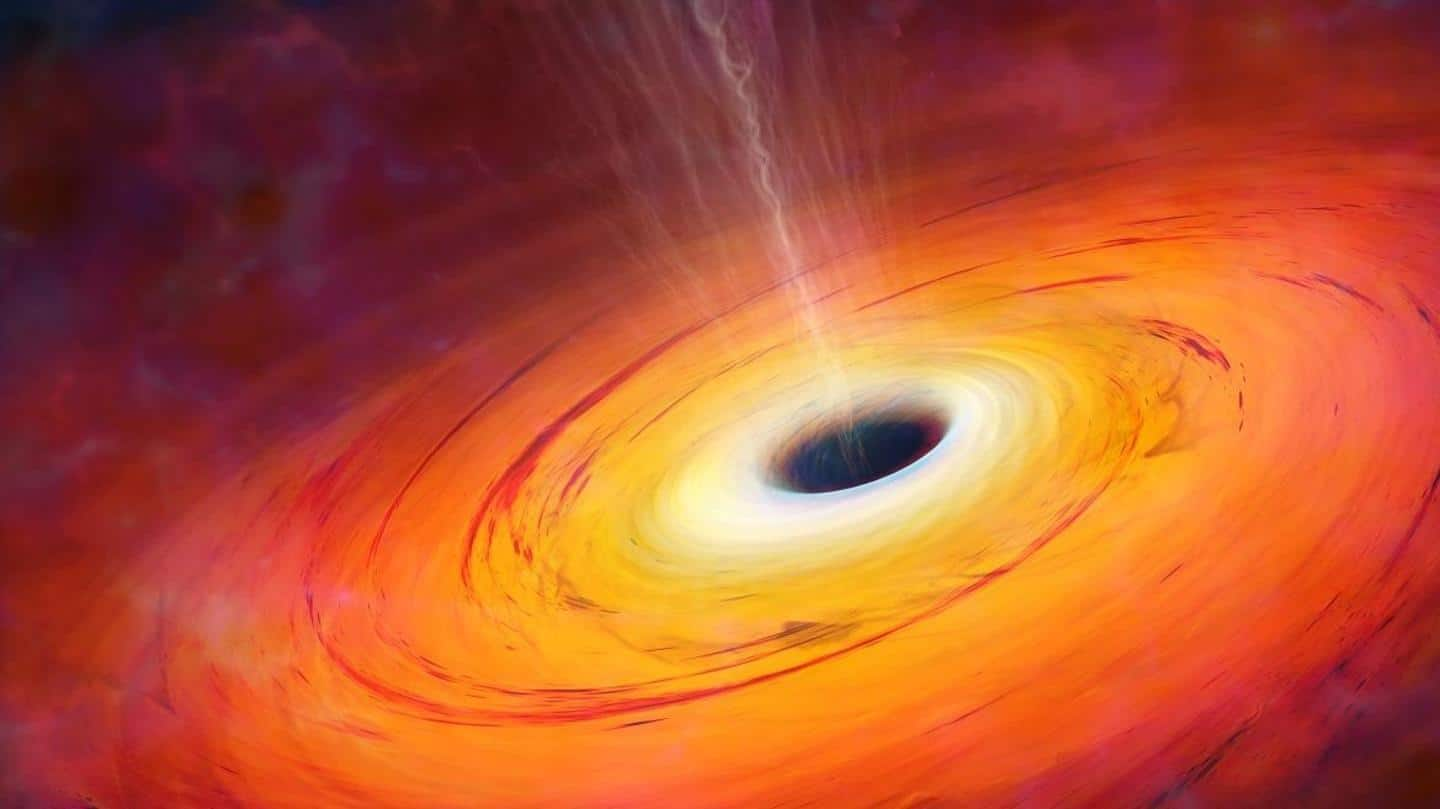
Fastest-growing black hole ever is devouring Earth-like mass every second
What's the story
Australian astronomers have discovered what they believe to be the fastest-growing black hole of the past nine billion years.
The black hole is growing so fast that it consumes the equivalent of one Earth every second.
The object named J114447.77-430859.3, or J1144 for short was discovered by astronomers from the Australian National University (ANU) using the SkyMapper Southern Sky Survey telescope.
Context
Why does this story matter?
The universe is a present that keeps on giving. Just when mankind assumed that we may not find a rapidly growing black hole with an immensely luminous quasar, the universe said, "not today."
This discovery is made better by the fact that the black hole was not hiding from us. We just failed to see it until now.
About the black hole
The J114 is 500 times bigger than Sagittarius A*
The black hole's mass is 2.6 billion times that of the sun. It is 500 times bigger than the Sagittarius A*, the massive black hole in the Milky Way.
The J114 can fit in the whole solar system behind its event horizon, the boundary along a black hole through which nothing can escape.
It sits at 18-degree above the galactic plane.
Position
Why no one noticed the massive black hole until now?
The black hole's position is what kept it hidden. People have usually avoided looking close to the Milky Way plane due to the many foreground stars which make it difficult to see anything beyond.
Dr. Christopher Onken, the lead researcher said, "The fact that something so bright has escaped the many, many searches that have been conducted over the years is quite remarkable."
Brightness
The quasar is 7,000 times brighter that Milky Way's stars
The J1144 black hole has been witnessing immense accretion, a process in which they gravitationally pull in gas and dust surrounding the object.
This frenzied accretion resulted in a quasar that is blasting out enough energy to make it 7,000 times brighter than every star in the Milky Way.
Similar quasars can only be found much earlier in the universe's 13.8 billion-year existence.
Different
Why is the J114 special?
Quasars with a similar level of activity can only be found in the earlier eons of the universe's history. About nine billion years ago, such quasar activity seems to have calmed down.
This is what makes the J114 stand out. When viewed from Earth, the quasar has a brightness magnitude of 14.5, meaning skywatchers with good telescopes can spot it in a dark area.
Information
Will we see another one like this?
Christian Wolf, a member of the ANU research team said, "We have essentially run out of sky where objects like this could be hiding." He added, "We are fairly confident this record will not be broken."